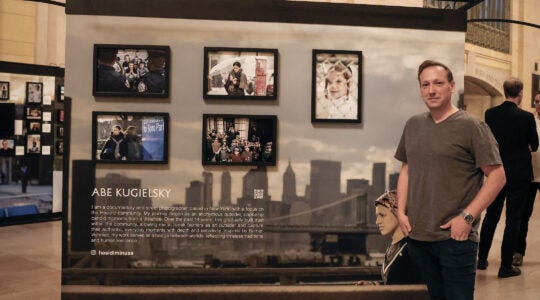LOS ANGELES, Jan. 9 (JTA) — The name Auschwitz has become synonymous with the horrors of the Holocaust. How did Auschwitz-Birkenau function as a 24/7 annihilation camp, and who were the men who operated the gears and levers of the killing machine?
A glimpse of the answers is found in “Verdict on Auschwitz: The Frankfurt Auschwitz Trial, 1963-1965.”
The three-hour documentary capsulizes one of the longest trials in German history. It lasted 20 months and included 22 defendants, 360 witnesses from 19 countries and batteries of lawyers, and was covered by 200 journalists. The presiding judge’s reading of the verdict took 11 hours.
Filmmakers Rolf Bickel and Dietrich Wagner culled their material from 430 hours of original audiotapes of the trial. They discovered the tapes in the basement of a Frankfurt courthouse.
On the defendants’ bank sat 22 former SS men, now paunchy and middle-aged in sober civilian suits. These were not the big shots like Auschwitz commandants Rudolf Hoess or Arthur Liebehenschel, who were executed in Poland shortly after the war.
Rather they were the middle- to low-level functionaries, the hands-on torturers and killers, who had distinguished themselves by their brutality and dedication to the job at hand.
One was Wilhelm Boger, an SS political officer and inventor of the Boger-Swing torture device, on which the genitals of prisoners were smashed.
Another was Josef Klehr, an illiterate medical orderly who strutted about impersonating a doctor and killed thousands through phenol injections.
Otto Kaduk, a Zyklon B handler, described the operation of the gas chambers with an engineer’s precision. Until his arrest he had been operating an old age home.
By the nature of the subject, this is a difficult, often agonizing film to watch, with few light moments. One is inadvertently supplied by defense attorney Hans Laternser, who gives new meaning to the word chutzpah.
Laternser argues that the SS men who took part in the selection process as the trains pulled into the camp actually saved lives by assigning some of the men and women to forced labor. If his clients hadn’t done so, the attorney proposes, all the arrivals would have been killed immediately.
At the end of the trial, six defendants were given life sentences and three were acquitted. The rest were sentenced to prison terms ranging from three to 14 years.
For all its historical and educational value, the trial, and by extension the film, lacks one important dimension.
While Auschwitz-Birkenau was certainly a killing field for vast numbers of Roma, or Gypsies, Soviet prisoners of war and political offenders, the vast majority of victims were Jews.
Yet in focusing on the nuts and bolts on how Auschwitz functioned, the victims fade into the background. This missing aspect may lie partly in the legal mechanics of the trial, but also reflects the reluctance of the West and East German governments in the 1960s to fully confront the Jewish dimension of the Final Solution.
(For additional background on the film, go to www.firstrunfeatures.com.)
JTA has documented Jewish history in real-time for over a century. Keep our journalism strong by joining us in supporting independent, award-winning reporting.





